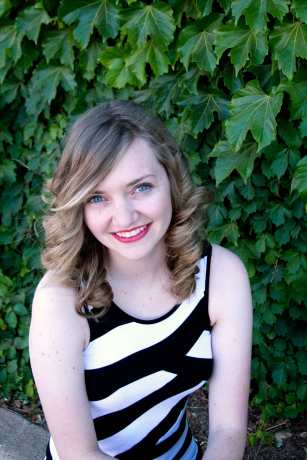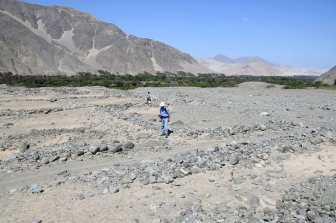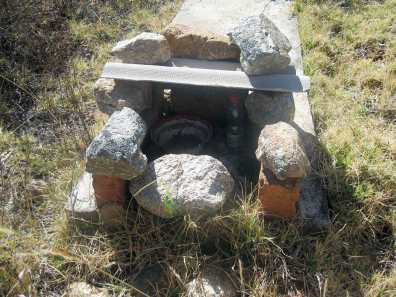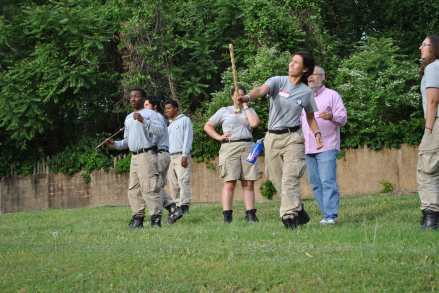
In the past couple of years co-creation has become a buzzword for a rather imprecise range of activities from simple collaboration to truly reciprocal processes. In the Introduction to Positioning Your Museum as a Critical Community Asset Elizabeth Bollwerk and I argue that co-creation
“. . . does not mean working for the community based on what a museum perceives are a community’s needs. Instead co-creation means working with the community to address the needs as expressed by the community itself.”
To apply the concept of co-creation to mentoring, simply substitute “mentee” for “community” in the above quote. A co-creative perspective best describes my approach to mentoring.
The other day I began reading On the Brink of Everything: Grace, Gravity and Getting Old by Parker Palmer. The title sums up the volume’s focus. Palmer includes a substantive mentorship discussion in the book. As well, he articulates an approach to mentorship to which I completely align. He writes (2018:33):
Every spring, commencement speakers take the stage across the country to tell the graduates, “Our hopes for the future are in your hands.” . . . It’s unfair to lay all responsibility for the future on the younger generation. . . it’s not true that the young alone are in charge of what comes next. We – young and old together – hold the future in our hands. If our common life is to become more compassionate, creative, and just, it will take an intergenerational effort . . . let’s change the metaphor and invite young adults to join the orchestra. As we sit together, we can help them learn to play their instruments – while they help us learn the music of the merging world, which they hear more clearly than we do.
Flowing from the above, here are two relevant points in how I approach mentorship:
- The mentor and the mentee are in a reciprocal learning relationship beyond the mechanics of the mentoring process. I find that the mutual expenditure of time and effort by the mentor and the mentee is a miniscule part of the reciprocity. Instead, as with Palmer’s orchestra metaphor, both the mentor and mentee learn from their mutually shared wisdom and skills. This point is the very essence of the diagram pictured above, adapted from Palmer’s The Courage to Teach. In a teacher/student or mentor/mentee relationship, everyone can access the Great Thing.
- A true co-creative approach mandates that the expressed needs of the mentee be at the heart of the relationship. The mentor responsibility is not to create a clone of themselves or what aligns with the interests of their academic department.
Below, I offer several mentorship examples I experienced that illustrate these points.
 Emily Neal and Scott Hadley were interns at the C.H. Nash Museum at Chucalissa in 2010. They created a hands-on activity using educational collections of stone tool artifacts. In the first couple of minutes of this video, Emily and Scott talk about what they learned in creating the activity. What I remember most from the eight-year old experience was, to use Palmer’s metaphor, “learning the music of the emerging world” that they represented. In the activity created by Emily and Scott, they explained how stone tool styles changed over the thousands of years of prehistory. Typically, when I explain stylistic changes, I rely either on battleship curves (popularized by James Ford in archaeology over 50 years ago) or talk about automotive stylistic changes through time. Emily and Scott used the stylistic changes of video gaming devices over a several year period, something that the 10-15 year old target audience could readily appreciate. The activity they created contained many similar examples. Emily and Scott clearly reflected the mindset of the target audience better than my PhD in Anthropology. I learned a great deal about education in museum settings from Emily and Scott during their internships. As an aside, I am pleased to see in a recent Facebook post that the stone tool program is still part of the Museum offerings and Emily, now a full-time employee at Chucalissa, leads the activity that she created eight years ago as an intern!
Emily Neal and Scott Hadley were interns at the C.H. Nash Museum at Chucalissa in 2010. They created a hands-on activity using educational collections of stone tool artifacts. In the first couple of minutes of this video, Emily and Scott talk about what they learned in creating the activity. What I remember most from the eight-year old experience was, to use Palmer’s metaphor, “learning the music of the emerging world” that they represented. In the activity created by Emily and Scott, they explained how stone tool styles changed over the thousands of years of prehistory. Typically, when I explain stylistic changes, I rely either on battleship curves (popularized by James Ford in archaeology over 50 years ago) or talk about automotive stylistic changes through time. Emily and Scott used the stylistic changes of video gaming devices over a several year period, something that the 10-15 year old target audience could readily appreciate. The activity they created contained many similar examples. Emily and Scott clearly reflected the mindset of the target audience better than my PhD in Anthropology. I learned a great deal about education in museum settings from Emily and Scott during their internships. As an aside, I am pleased to see in a recent Facebook post that the stone tool program is still part of the Museum offerings and Emily, now a full-time employee at Chucalissa, leads the activity that she created eight years ago as an intern!
 Gabriel Short graduated this year with an Masters in Liberal Studies (MALS), and certificates in Museum Studies and Philanthropy and Nonprofit Leadership from the University of Memphis. I met Gabriel in about 2015 when he sought advice on a career in museums. Gabriel was one of those folks with a million ideas about what he wanted to do in life without a solid plan on anything. As a result, although he was someone with clear intellectual ability, his lack of focus and mediocre GPA caused his rejection by academic departments to which he applied for graduate studies. He was becoming frustrated. I met with Gabriel and suggested a different approach. I suggested that he consider the MALS program – often considered by academic departments as a “less than” degree. However, for Gabriel, it would allow him the opportunity for considerably greater latitude in constructing his curriculum, explore his research interests, and study abroad for course credit. Upon his graduation this past spring, Gabriel sent me a note expressing how the MALS program proved ideal for preparing his next career steps. He is now employed as a data analyst with the University of Memphis Research Foundation. In working with students such as Gabriel, along with examining my own academic and professional career, I emphasize the need to think long and hard about the necessary steps to prepare for a career. Too many students end up with graduate degrees that either poorly qualify or over qualify them for their career interests. I learned that mentoring students on their academic trajectory must be divorced from my own interests in what I think they should pursue, or the recruitment interests of the department to which I am affiliated.
Gabriel Short graduated this year with an Masters in Liberal Studies (MALS), and certificates in Museum Studies and Philanthropy and Nonprofit Leadership from the University of Memphis. I met Gabriel in about 2015 when he sought advice on a career in museums. Gabriel was one of those folks with a million ideas about what he wanted to do in life without a solid plan on anything. As a result, although he was someone with clear intellectual ability, his lack of focus and mediocre GPA caused his rejection by academic departments to which he applied for graduate studies. He was becoming frustrated. I met with Gabriel and suggested a different approach. I suggested that he consider the MALS program – often considered by academic departments as a “less than” degree. However, for Gabriel, it would allow him the opportunity for considerably greater latitude in constructing his curriculum, explore his research interests, and study abroad for course credit. Upon his graduation this past spring, Gabriel sent me a note expressing how the MALS program proved ideal for preparing his next career steps. He is now employed as a data analyst with the University of Memphis Research Foundation. In working with students such as Gabriel, along with examining my own academic and professional career, I emphasize the need to think long and hard about the necessary steps to prepare for a career. Too many students end up with graduate degrees that either poorly qualify or over qualify them for their career interests. I learned that mentoring students on their academic trajectory must be divorced from my own interests in what I think they should pursue, or the recruitment interests of the department to which I am affiliated.
 Elizabeth Cruzado Carranza and I first met in 2013 at the bus station in Caraz, in her native Peru where she had come to pick me up to then head up to the small village of Hualcayán. A colleague, Rebecca Bria had invited me to participate in a cultural heritage project in the small 400-person Andean community. The next year, Eli applied to and was accepted as a graduate student at the University of Memphis. I hired her as a graduate assistant at the C.H. Nash Museum at Chucalissa which provided her with a stipend and tuition waiver. Upon receiving her M.A. from the University of Memphis, Eli was accepted and funded to a PhD program at the Louisiana State University. Over the past five years, we worked together on several projects in both Hualcayán and the Casma region on Peru’s north coast. Eli and I published articles and gave presentations based on our mutual work. For example, here is the Annual Report from the first year’s activities for the Culture and Community in Casma nonprofit we launched. Since our first meeting based in a student/faculty relationship, today we have moved to function as colleagues. Since 2013, in my half-dozen trips to Peru, I have learned much about the rich cultural heritage of Eli’s country.
Elizabeth Cruzado Carranza and I first met in 2013 at the bus station in Caraz, in her native Peru where she had come to pick me up to then head up to the small village of Hualcayán. A colleague, Rebecca Bria had invited me to participate in a cultural heritage project in the small 400-person Andean community. The next year, Eli applied to and was accepted as a graduate student at the University of Memphis. I hired her as a graduate assistant at the C.H. Nash Museum at Chucalissa which provided her with a stipend and tuition waiver. Upon receiving her M.A. from the University of Memphis, Eli was accepted and funded to a PhD program at the Louisiana State University. Over the past five years, we worked together on several projects in both Hualcayán and the Casma region on Peru’s north coast. Eli and I published articles and gave presentations based on our mutual work. For example, here is the Annual Report from the first year’s activities for the Culture and Community in Casma nonprofit we launched. Since our first meeting based in a student/faculty relationship, today we have moved to function as colleagues. Since 2013, in my half-dozen trips to Peru, I have learned much about the rich cultural heritage of Eli’s country.
Eli and her family have always expressed tremendous gratitude to my wife and I for providing for her in terms of material and moral comfort during her time as a student in the U.S. When she received her Masters Degree, members of her family from New York to Lima, Peru came to Memphis for the event. At a dinner in Eli’s honor, I noted how her family always thanked me for helping Eli, but I wanted to use the occasion to thank them. I noted that career goals for me included giving back for the benefits I received as a student and also to conduct meaningful work. Besides the hospitality her family always provides when I am in Peru, I thanked them for entrusting their daughter to our household for two years – pretty much sight unseen. I thanked them too as in coming to know an work with Eli, I ended the “institutional” part of my professional career in a several year project that met my expressed needs to be engaged in the preservation and presentation of the cultural heritage of underserved peoples. I more fully learned through working with Eli how it is the student/mentee who provides the opportunity for the professor/mentor to live into their needs as a professional. I have also come to see in students such as Eli the true collegial component of such relationships.
Now, back to co-creation – in all three of the above examples, the expressed needs of the mentees formed the basis of the engagement – whether in gaining experience through internships, advising on an academic trajectory, or obtaining a graduate degree and launching a local program to preserve and present a vanishing cultural heritage. At the same time, the expressed needs of the mentor are addressed equally by the very same processes. Obviously, the mentee and mentor cannot exist independently. I am convinced that in ideal relationships, the mentor and mentee co-create with each other opportunities of equal value to grow more fully into their true selves.
























